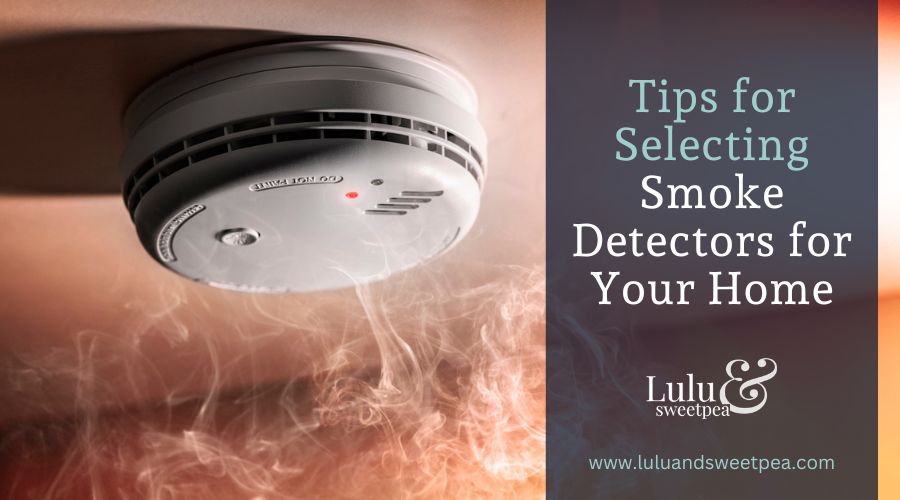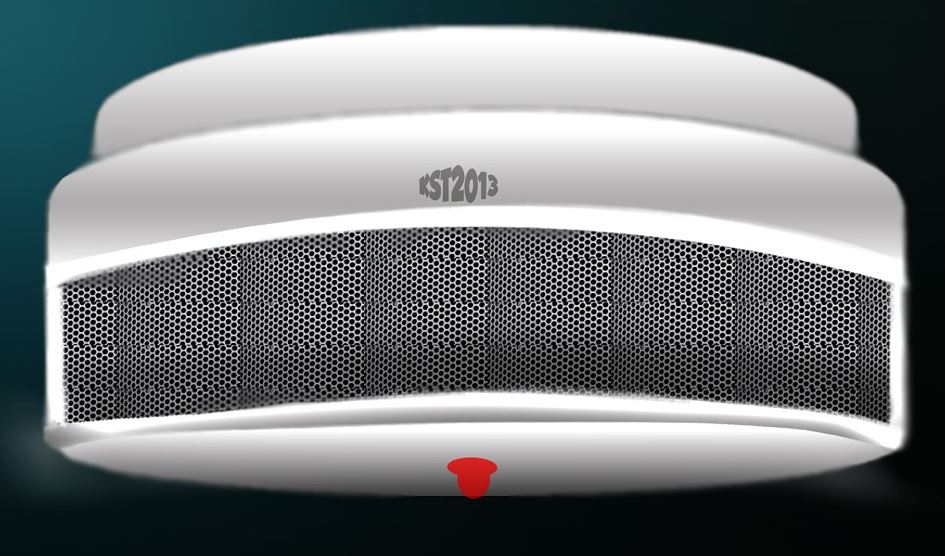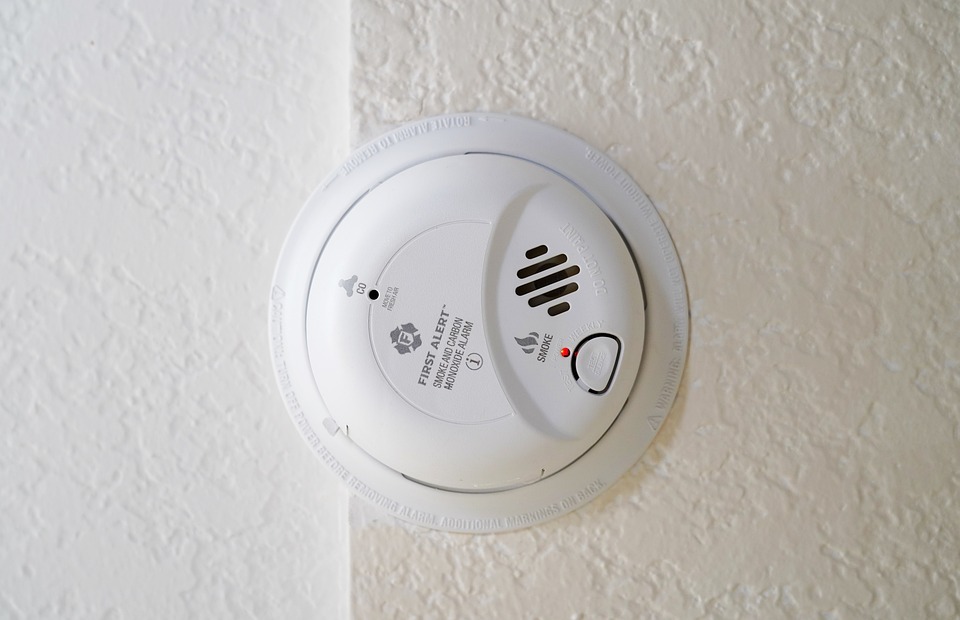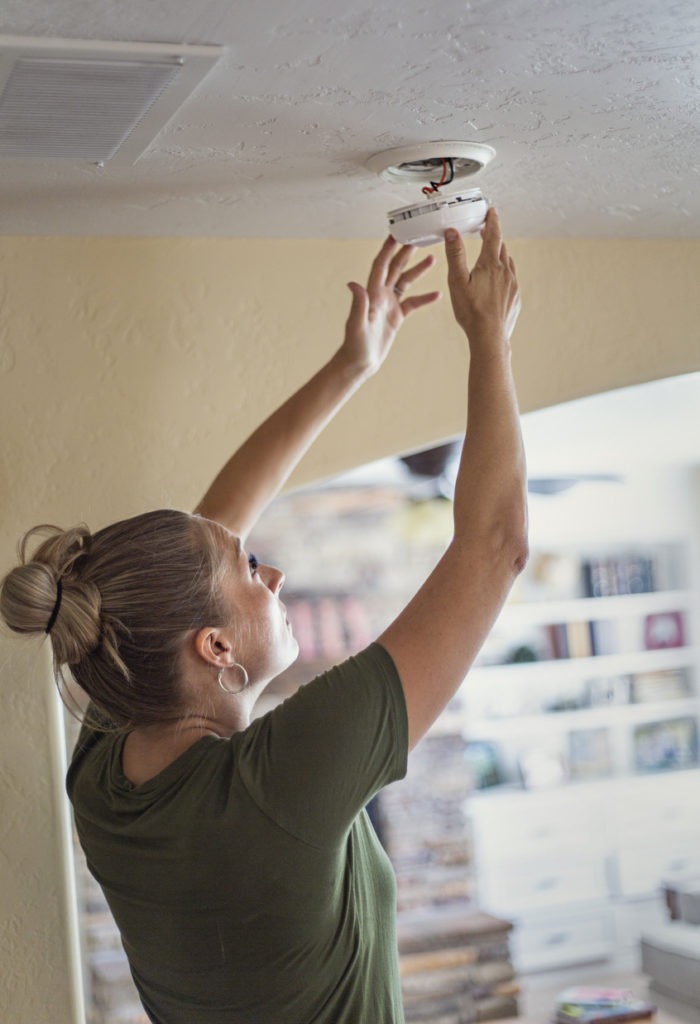Smoke detectors are required in every residence. Installing and maintaining smoke alarms is lifesaving. In homes with working smoke detectors, the probability of dying in residential structure fires is 55 percent lower than in homes with no alarms or none that functioned.
What’s a smoke detector?
A smoke detector is an electronic fire-protection equipment that automatically detects the presence of smoke, a critical sign of a fire, and alerts the people of the building.
As a part of a building’s central fire alarm system, commercial and industrial smoke detectors send a signal to a fire alarm control panel. Every business is required by law to have a smoke detection system. Household smoke detectors, often known as smoke alarms, emit an audible and/or visual alarm from the detector itself. They can be standalone battery-powered devices or multiple interconnected hardwired (mains-powered) devices with battery backup. This must be installed in all new construction and large renovations.
Considerations When Purchasing a Smoke Detector
It is crucial to consider your lifestyle and budget while searching for a high-quality smoke alarm. It is advised that you install a smoke detector in each bedroom and outside each bedroom (in a landing or hallway area). Additionally, at least one should be placed on each floor, including the kitchen. To prevent the kitchen detector from being overly sensitive, it should be placed at least 10 feet from the stove. Consider the following:
1. Verify local ordinances
Check the local restrictions before you shop. Your municipality or state may have special restrictions regarding the types and installation of smoke detectors, which you may need to be aware of before selling your property, for instance. Additionally, some insurance companies offer a discount for smoke detector-equipped homes.
2. Check for the UL Mark
Check the package of the detector to ensure that it conforms to the Underwriters Laboratories standard; look for the UL label. You should also check the back of the detectors for the date of manufacture. Over time, devices lose their sensitivity, thus the more recent they are, the better.
UL has recently announced revisions to its requirements, mandating that all manufacturers provide smoke detectors with the ability to differentiate between smoldering fires and cooking smoke.
3. Consider Voice Alerts
Children sleep more deeply than adults and may not respond to a standard alarm. Some smoke detectors utilize voice activation.
4. Think About Your Security System
You can integrate smoke detectors into a security system that emits alarms both inside and outside the home. Such systems may also include a monitoring service that can contact the police or fire department, or even your cell phone, in the event of an emergency.
Types of Smoke Detectors
There are two types of passive smoke detectors – photoelectric (optical) and ionization (physical process). For best protection against both fast-flaming and slow-smoldering fires, a combination of the two alarm kinds (dual sensor smoke alarm) is advised. Also available are combination optical smoke and heat alarms and mixed smoke and carbon monoxide alarms. When smoke enters the detection chamber, a photoelectric detector detects the abrupt scattering of light, triggering the alarm.
Photoelectric smoke detectors respond 15 to 50 minutes faster than ionization alarms to fires in their early, smoldering stages, before they burst into flame. They can be placed next to kitchens. Some dual optical types are available. ionization smoke alarms are extremely sensitive to microscopic smoke particles and often respond 30 to 90 seconds faster than photoelectric smoke alarms to fast-flaming flames, but not to smoldering fires. If they are situated too close to kitchens or garages, they may be too easily activated.
Ionization alarms transport a small quantity of radioactive material between two electrically charged plates, which ionizes the air and generates a flow of current between the plates. When smoke enters the chamber, it disturbs the flow of ions, hence decreasing the current flow and activating the alarm. The proper type of smoke detector must be fitted to prevent them from becoming inoperable due to dust or humidity. If this is the case, a more suitable detector, such as a UV or infrared system that is not triggered by particles, should be fitted.
Guide to Installation and Maintenance of Smoke Detectors
1. Conduct research and choose your smoke alarms
If your present detectors are older than ten years, or if your home does not have any detectors, get new ones immediately.
Before making a purchase, conduct research on the various types of smoke sensor alarms. There are numerous brands, models, and price points available, allowing you to choose the detector that best suits your safety requirements and budget.
2. Install detectors on each floor of your home
Your home’s layout will decide the number of detectors you need, but you should install at least one on each level, one in each bedroom, and one outside of every sleeping area. Don’t forget to account for basements and attics as different levels when calculating the number of devices, you require.
3. Install your alarms promptly in central areas
Install your smoke alarms immediately; you do not want to spend a single night without their protection.
Place each alarm on a flat section of the wall or ceiling, about in the room’s middle. Ensure that wall-mounted detectors are approximately 12 inches or less from the ceiling.
When executing the installation, carefully read and adhere to the device’s instructions, especially if the detectors require hardwired power. If you are uncomfortable with the installation process, you should hire a professional to install the alarms for you.
4. Test your smoke alarms immediately after installing your smoke detectors
Once the smoke detectors have been placed, test them with everyone in the home. Press the test button on each device separately to ensure that everyone can recognize the alarm’s sound. This initial test is also an excellent opportunity to review your house evacuation plan, including routes and outside meeting locations. The U.S. Fire Administration outlines a number of exercises to incorporate into your fire drill so that every family member is prepared and has a greater chance of escaping a fire unharmed.
5. Perform monthly power testing
Even though some smart detectors are self-testing, it is advisable to physically test your detectors at least once a month. To conduct a test, press the smoke detector’s test button to ensure that the sensor is operational and that the alert is audible at the proper volume. If you have fire alarms in hard-to-reach parts of your home, take precautions when climbing to test them. Use a solid stepladder, never a chair, and execute these duties when another member of the household is present.
6. Replace the batteries in non-hardwired detectors annually
If your detector requires batteries, do not wait until they are dead before replacing them. Set an annual battery replacement date on a memorable occasion, such as the beginning of summer or Memorial Day. A well-known date will aid in remembering the work. Always refer to the manual and follow the directions when replacing the batteries in your smoke alarm.
7. Clean your detectors thoroughly at least once a year
Dust and pollutants can hinder the performance of fire alarms, so strive to keep detectors clean. An occasional quick dusting with a dry towel should be sufficient to remove any external dust, but you should also do annual deep cleanings.
To perform a thorough cleaning, remove the device from the wall or ceiling, disconnect the power supply, and then remove the outer casing with care. Using a vacuum attachment, a can of compressed air, or a dry cloth, carefully remove any dust that has accumulated; avoid using liquid sprays or cleansers. Once all dust has been removed, the detector can be reassembled and remounted to the wall or ceiling.
In conclusion
Even with excellent fire prevention measures, a house fire can occasionally occur. Fires spread rapidly; therefore, a properly fitted and operational smoke detector is essential to a fire safety and evacuation plan. Smoke alarms provide an early warning of a potentially dangerous fire, allowing you to rapidly evacuate the building.
Smoke detectors are essential for home safety. Therefore, selecting the proper smoke detectors is essential for ensuring the safety of your property. Whether you want to link your smoke detector into your smart home system or simply want a solid, no-frills workhorse, there are a variety of excellent smoke detector solutions available.



